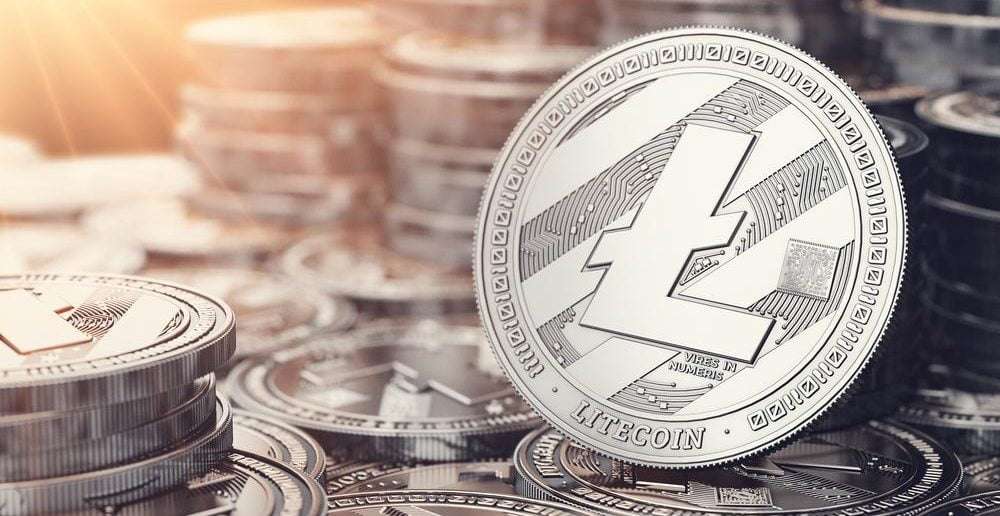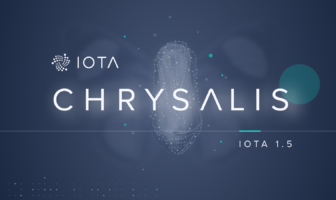What is Litecoin?
Litecoin.info describes the crypto currency Litecoin as
a peer-to-peer Internet currency that enables instant, near-zero cost payments to anyone in the world. Litecoin is an open source, global payment network that is fully decentralized. Mathematics secures the network and empowers individuals to control their own finances.
This description would also have applied to Bitcoin a few years ago. It is all the less surprising that Litecoin (LTC), one of the oldest crypto currencies created after Bitcoin, is a fork based on the Bitcoin code. Former Google employee and developer Charlie Lee released Litecoin in 2011, but unlike Satoshi Nakamoto Charlie Lee is not a synonym, but a real person who is even very active in the crypto community. Lee announced Litecoin as the “silver” version of Bitcoin (“digital gold”). Lee’s motivation for founding Litecoin was to develop a faster and better version of Bitcoin.
Accordingly, Bitcoin and Litecoin share a code base, so Bitcoin developers always develop for Litecoin (e.g. the code of the Bitcoin Lightning network can also be used by Litecoin). However, there are also some differences, which are examined in the following comparison between Bitcoin and Litecoin.
Comparison: Bitcoin vs. Litecoin
The following table gives an overview of the formal differences between Bitcoin and Litecoin.
| Bitcoin | Litecoin | |
| Total volume | 21 million BTC | 84 million LTC |
| Mining algorithm | SHA-256 | Scrypt |
| Block time | 10 minutes | 2,5 minutes |
| Block Reward (2018) | 12,5 BTC | 25 LTC |
| Block Reward Halving | every 210,000 blocks | every 840,000 blocks |
| next Halving | 21 May 2020 | 07 August 2019 |
Total volume
The total quantity of all Bitcoin is fixed at a maximum of 21 million BTC in the code. Charlie Lee has increased this amount to 84 million LTC and has written it into the Litecoin Code. The current price of Litecoin can be checked here. If you want to take the courses of Bitcoin, Ethereum, Ripple, IOTA, or other Altcoins (2.000 pieces), have a look at our course overview.
Mining algorithm
Probably the biggest technical difference is the mining algorithm. Although both crypto currencies use a proof-of-work (PoW) to achieve consensus across the entire network, the two crypto currencies are not the same. While Bitcoin sets it to “SHA-256”, Litecoin uses “Scrypt”.
Bitcoin’s SHA-256 hashing algorithm allows strong parallelization. This means that the calculations that Miner perform can be greatly accelerated by parallel processing. This characteristic has led to the development of increasingly powerful ASICs and to an exponential increase in Bitcoin’s level of difficulty.
Litecoin’s algorithm Scrypt was originally designed so that there was no ASIC technology for this algorithm. This was due to the fact that while the crypt-hash function uses SHA-256 as a subroutine, it also depends on fast access to powerful memory, making it more difficult to run many crypt instances in parallel. The calculations were therefore much more serialized than those of SHA-256 in Bitcoin. This meant that the manufacturing costs for Scrypt ASICs were significantly higher than those for SHA256 ASICs.
Lee had therefore specifically chosen Scrypt in 2011 to keep the entry costs for Litecoin mining as low as possible, as everyone with a computer should mine LTC. Even at the beginning, modern GPUs were superior to “normal” CPUs. Nevertheless it was possible to mine LTC with a common computer via CPU. The Litecoin network should remain decentralized and not be dominated by large companies with ASIC farms.
However, early efforts were also made to produce an ASIC for Litecoin. Already in 2014 the first Litecoin ASIC Miner was released by the manufacturer Zeus. Since the release of the Bitmain Antminer L3+ in May 2017 at the latest, however, mining has completely shifted to ASICs.
Block time
While the block time for Bitcoin is 10 minutes, it was set to 2.5 minutes for Litecoin. This allows Litecoin to handle a higher transaction volume, which makes LTC transactions faster than Bitcoin transactions.
The disadvantage of this higher block volume, however, is that the Litecoin block chain is proportionally larger than that of Bitcoin. There is also a higher probability of orphaned blocks. This happens when two miners find a block at the same time.
Block Reward and Halving
Like Bitcoin, Litecoin initially set a block reward of 50 units. Just like Bitcoin’s Block Reward, Litecoin’s Block Reward is halved regularly. While halving takes place every 210,000 blocks at Bitcoin, it takes place every 840,000 blocks at Litecoin.
The next Litecoin Halving is scheduled for 07 August 2019. Then the reward will drop from 25 to 12.5 LTC.
Who supports Litecoin?
In 2018, the Litecoin Foundation founded a #paywithlithlitecoin initiative to significantly increase the acceptance of Litecoin. While Bitcoin can rather be regarded as a store of value, Litecoin is to be marketed as a means of payment and payment method for merchants.
LTC is predestined for this because of the 4-fold shorter block time, since not only one, but theoretically four transaction confirmations can take place within 10 minutes. There are currently more than 9 payment processors: Aliant Payment, BTCPay, Coinbase, CoinGate, CoinPayments, Globee, GoCoin LTCPay and TravelbyBit that support Litecoin payments for merchants.
Bottom line: Is Litecoin worth investing?
At first sight Litecoin is just a clone of Bitcoin who made some changes to the source code of Bitcoin. However, the success of Litecoin so far proves it right. For a long time LTC was among the top 3 crypto currencies by market capital. Currently (October 2018) Litecoin is still represented within the 10.
Because Litecoin has the same code base as Bitcoin, it will also benefit from the development of the Bitcoin Lightning network. Furthermore, there are numerous other reasons that speak for the future success of Litecoin, as Charlie Lee himself explained on Twitter:
3/ Miners have no incentives to attack the network because it will destroy the value of their ASIC hardware.
Litecoin has a ton of liquidity, which is important for people to get in/out of LTC. It is on practically every fiat and crypto exchange (Gemini soon), even more than ETH
— Charlie Lee [LTC⚡] (@SatoshiLite) September 20, 2018
6/ FUD: Litecoin is no longer needed now that Bitcoin can scale with LN.
TRUTH: Many of the LN clients and apps also support LTC because they see the value of Litecoin. With atomic swaps, LTC interoperates with BTC on the Lightning Network.
— Charlie Lee [LTC⚡] (@SatoshiLite) September 20, 2018
8/ FUD: Litecoin as Bitcoin's testnet is not worth $3B.
TRUTH: Even if Litecoin's only use case is a testnet, you can't put an absolute value on it. Need to look at it relative to Bitcoin. Litecoin's marketcap is only 3% of Bitcoin's marketcap. That is not very large at all!
— Charlie Lee [LTC⚡] (@SatoshiLite) September 20, 2018
10/ FUD: Litecoin has no development in the past 6 months.
TRUTH: We don't work on the master branch, where people are looking. This is generally good Git practice! Proof: we released 0.16.2 last week and just released 0.16.3 today, which fixed the recent critical DoS bug.
— Charlie Lee [LTC⚡] (@SatoshiLite) September 20, 2018
Subscribe to our daily newsletter!
No spam, no lies, only insights. You can unsubscribe at any time.
Last updated: 05/07/2019
[ratings]




